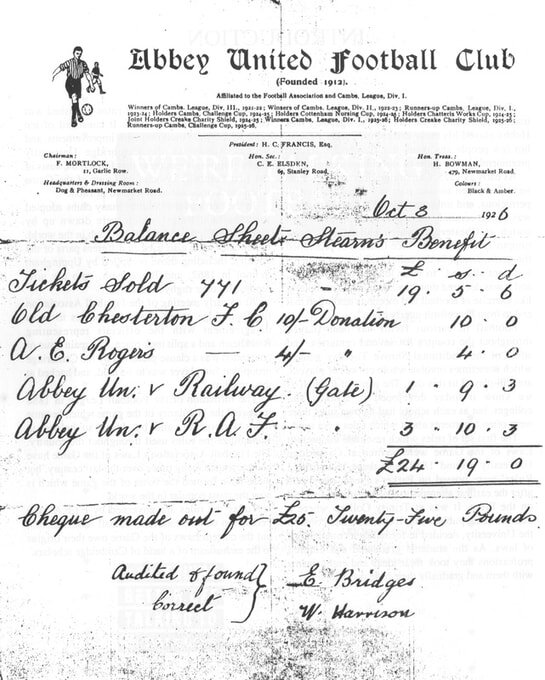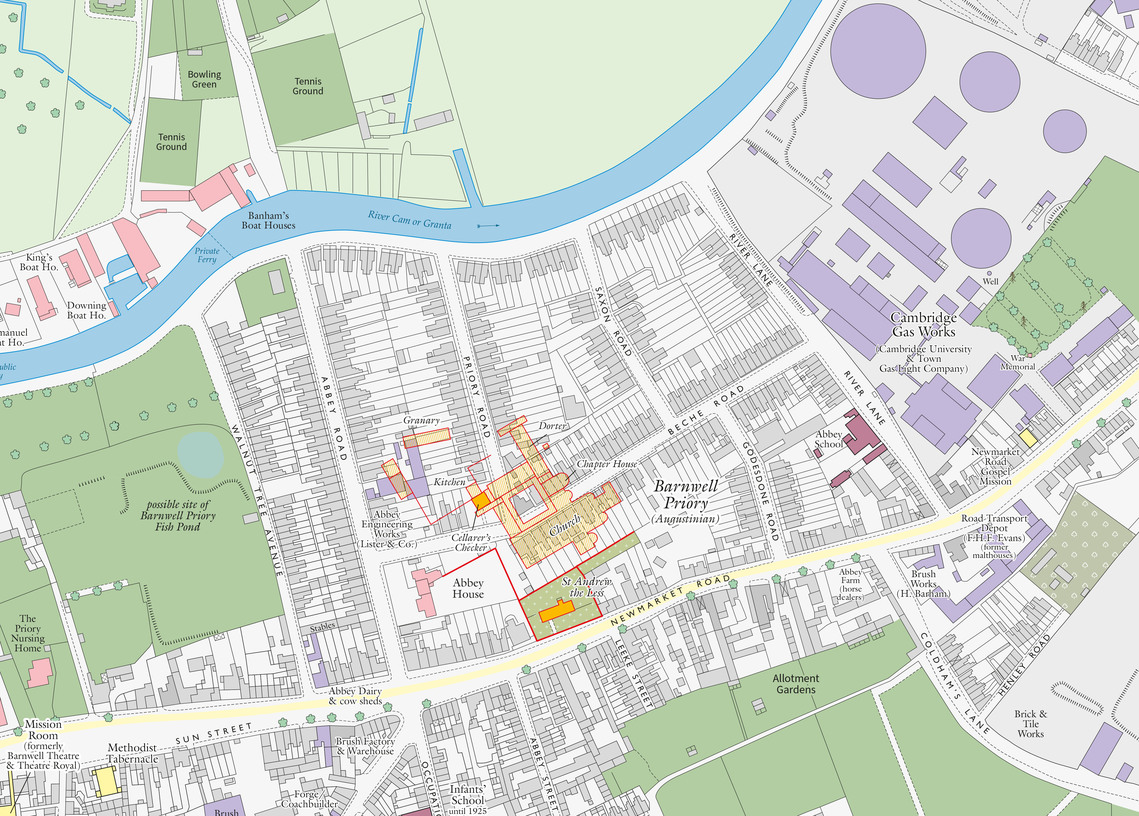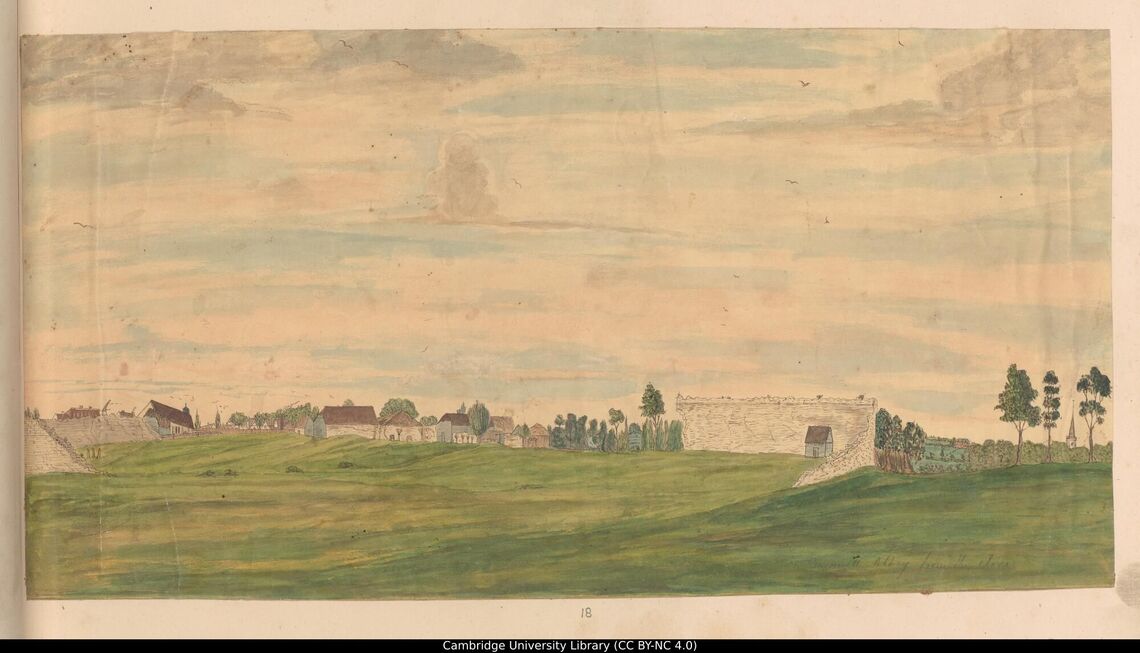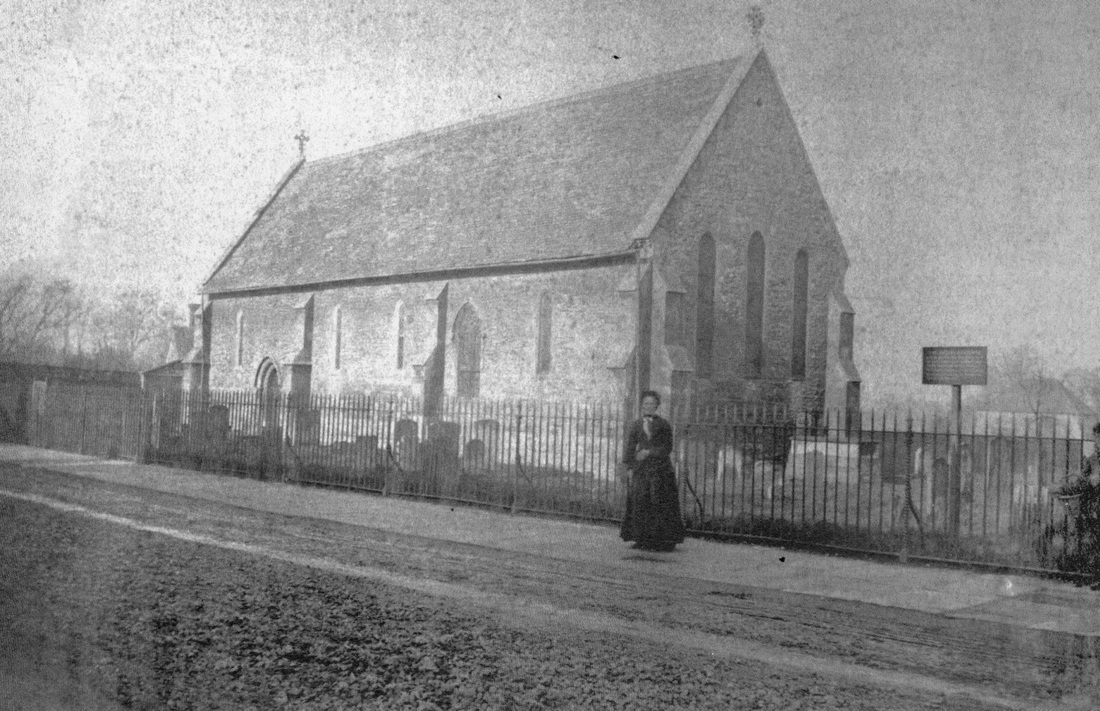“Cambridge is just a palimpsest. All of this is. Just one century laid upon another upon another. Nothing is ever quite lost whilst there are a few old buildings standing sentinel.” - Rebecca Stott, Ghostwalk (2007)
The St Andrew the Less Community Project shall develop programmes that open up the unknown history of Abbey to the neighbourhood’s residents and create learning opportunities, with particular focus on literacy and historical understanding. Taking inspiration from Historic England’s successful Heritage Schools Programme, we want the people of Abbey to be able to rediscover the history of their own area in ways that are meaningful and exciting and create a sense of pride and belonging.
Abbey Ward, or Barnwell, as it is traditionally known, has a rich historical landscape, from medieval times to a celebrated industrial heritage. In the Middle Ages Barnwell Priory was thriving and wealthy and became a target for the Peasants’ Revolt in 1381. In 1203 King John stayed at the Priory, and in 1211 granted it the right to hold a midsummer fair. It also hosted Henry III, Edward I and Henry VI. England’s first poor law was passed in Barnwell Priory in 1388.
Despite these illustrious events, the area lagged behind the rest of Cambridge in its development for its ordinary people. Barnwell was a place far away from Castle Mound, the administrative centre of the city, and the growing might of the Cambridge colleges. In medieval times it was a place for outcasts, such as the lepers of the famed Leper Chapel. And by the 19th century the place had no better a reputation, when it became an overcrowded working-class district described by Cambridge city-dwellers as a den of vice and immorality. It was also the place where all the muck and sewage of Cambridge washed up, necessitating, eventually, that impressive feat of Victorian engineering, the pumping station.
In many parts of Barnwell, the inequality persists and now its heritage is crumbling too. All three of Cambridge’s buildings on the Heritage at Risk Register are in Abbey Ward: the pumping station, the Leper Chapel and St Andrew the Less. As Abbey is transformed through its new developments, we do not want to lose the depth and meaning of the area’s historical legacy. We want to save the physical buildings but also remember the social heritage.
Abbey is already noted for its industrial heritage, for which the nearby Cambridge Museum of Technology is the focus. This lottery-funded museum, which was also born of local volunteers becoming concerned with the loss of something important to their community, will be a template for our plans for St Andrew the Less. We also see synergy between our intentions for St Andrew the Less and the Cambridge Museum of Technology, attracting tourism from the city centre and broadening the cultural offer of the city, in accordance with Cambridge City Council’s Cultural Strategy. This will bring money into the ward and create jobs for its residents.
The St Andrew the Less Community Project will raise awareness of the significance of Abbey Ward’s medieval history through renewed focus on Barnwell Priory (of which only St Andrew the Less, the council-owned Cellarer’s Chequer and parts of Abbey House survive), the 12th-century Leper Chapel, historic Stourbridge Fair (set up as a fundraiser for the lepers and at one point the biggest fair in mediaeval Europe) and Chesterton Towers. These are a network of precious medieval buildings in our area and St Andrew the Less is in a perfect position to tell their story. Not only from a practical point of view as it has the space and opportunity to do so, but as the capella ante portas of the priory it straddled both the ecclesiastical powerhouse that was Barnwell Priory and the community around it, in a way that we would like to bring the disparate parts of our community together.
This is not to say that many of the other overlooked neighbouring sites of historical significance are not relevant to our project. In our area is one of England’s only surviving Regency theatres, the Barnwell Theatre, now in the Cambridge Buddhist Centre. At St Andrew’s Church, Chesterton, lies the grave of the daughter of the African anti-slavery activist Olaudah Equiano, after whom the nearby bridge is named. Additionally there was William Tudor’s circus on Auckland Road.
And there is the story of Cambridge United at nearby Abbey Stadium. The football club was originally known as Abbey United, and began its existence as the football team of the church of St Andrew the Less. St Andrew the Less is the lynchpin connecting all these important and fascinating heritage areas.




